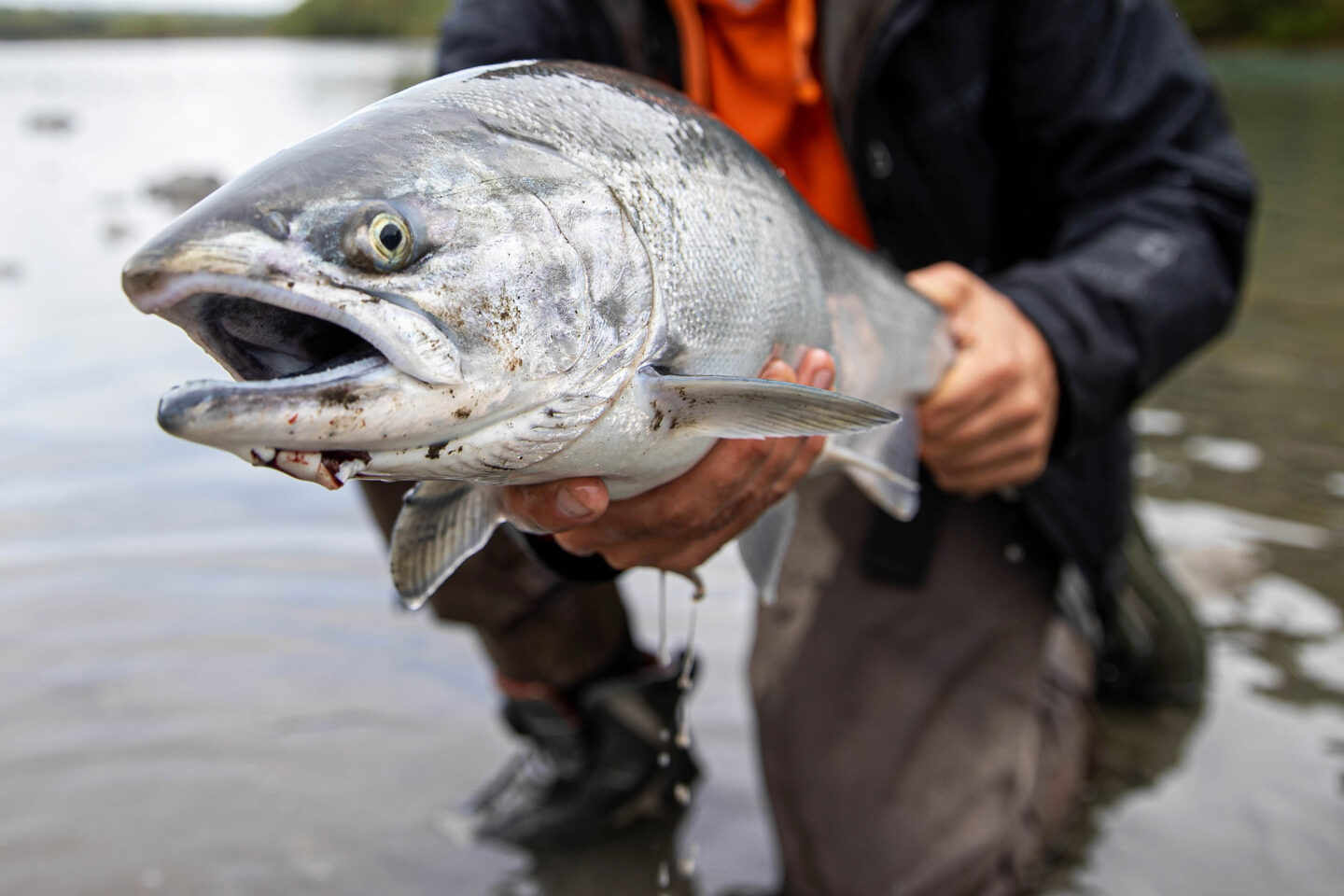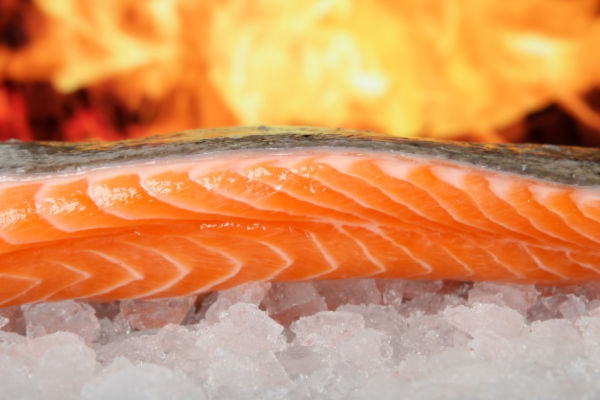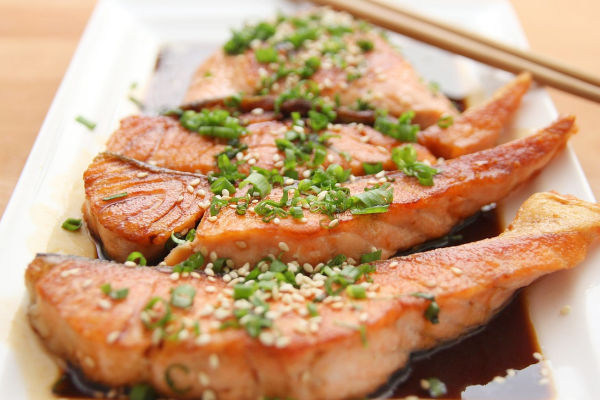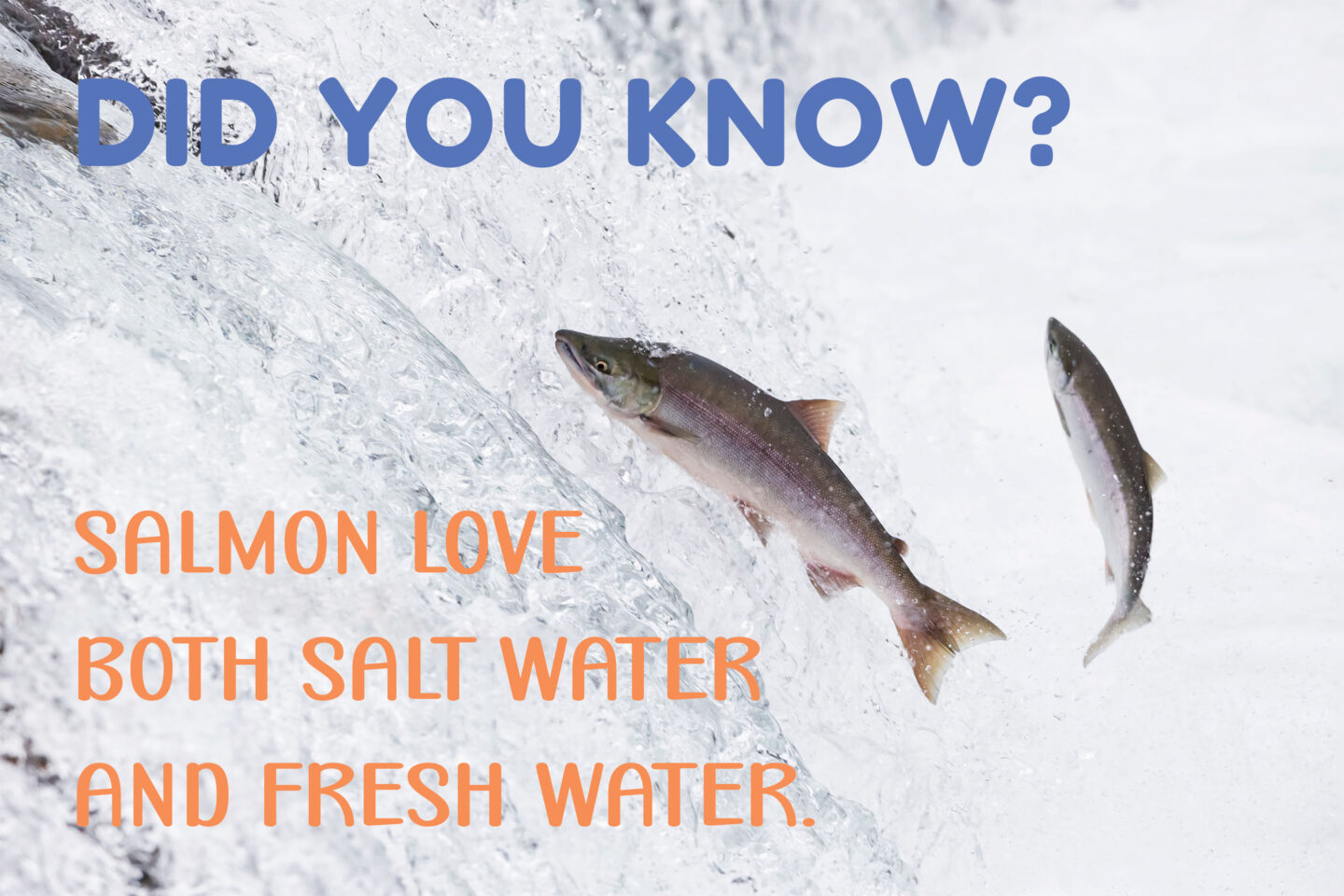Salmon is found on menus in restaurants and supermarkets throughout the United States. Its popularity with Americans continues to grow, with diners consuming roughly 2 ½ pounds every year [1].


On the plate, they look enticing, with fillets that are a vibrant shade of pinkish-red. But what does salmon taste like? The flavor will vary depending on the fish variety and method of cooking, among other factors. Let's dive in to see if salmon is worth eating.
Further reading:
What does snapper taste like?
What does eel taste like?
Arctic char vs. salmon - what's the difference?
Table of Contents
What Does Salmon Taste Like?
Fresh salmon fillets
Fresh salmon is a rich fish that's high in fat content. It has a soft, delicate texture with a mild flavor, not an overpowering fishy taste.
We recommend salmon for those who dislike fishy-tasting seafood, like sardines. It's a good option for serving children.
If you're considering eating salmon for the first time, you're probably at a restaurant or looking to buy fresh salmon from the store. These fillets come from farmed fisheries and are fed pellets that provide a characteristic color and taste.
How the taste of salmon varies by type
In the Pacific, there are different types of salmon, which all have a unique flavor and texture. You'll find that each salmon has varying levels of oil, which contributes to how rich the fish tastes.
Check out the relative fat content below for five common salmon varieties.

1. Chum
Chum salmon, aka Keta, contains the lowest fat content of all the types listed on this page. It has a neutral flavor and, thanks to its low-fat content, isn't too rich. They're an everyday variety, fished in high numbers in the Pacific Northwest region. Chum salmon roe (Ikura) is prized for its size and flavor.
2. Pink
Pink salmon is also known as humpback salmon. It is one of the smallest varieties of salmon and is abundant in our oceans. They have more oil than chum and are pale and delicate. Pink salmon are comparable to sole.
3. Coho
Coho salmon, also known as silver salmon, offers a distinctive flavor that's mild with a firm texture. It is a highly sought-after fish by restaurants and is often found from Oregon to Southern Alaska.
4. Sockeye
Sockeye salmon, also known as red or Kokanee salmon, is a deep reddish-orange fish. It is a popular variety thanks to its high fat content and pronounced salmon flavor. Sockeye is found in British Columbia and Alaska.
5. King
King salmon, or Chinook salmon, has the highest fat content, which means it's usually higher in price. This fish has a very soft, "melt in your mouth" texture that makes for good eating. The richness of this salmon can be a little too much for some.
Raw vs Cooked: Which is better?
Salmon can be eaten raw or cooked. Although cooking salmon doesn't alter the flavor drastically, there are a couple of differences.
- The texture of salmon becomes much softer and easier to chew once cooked. But if you overcook salmon, you'll get the opposite effect. It will become tough and unpleasant, even if overcooked by one minute.
- The outer layer of the fish intensifies in taste and is very good at absorbing other flavors such as lemon, seasoning, or chili.

Raw salmon is commonly used in sushi and is the hero ingredient in sashimi. Choosing a high-quality cut of salmon that doesn't have unpleasant fat, sinew, or bones is essential for a tasty dish.
What flavors go with salmon?
Salmon is an extremely versatile protein that works well with both pungent and subtle flavors.
| Creamy | Flavor Hit | Salty | Herbs | Sweet & Sour |
|---|---|---|---|---|
| Tartare sauce | Garlic | Olives | Chives | Maple syrup |
| Butter | Horseradish | Capers | Dill | Brown sugar |
| Crème fraiche | Ginger | Soy sauce | Basil | Honey |
| Natural yoghurt | Chili | Fish sauce | Parsley | Lemon |
| Aoili | Capers | Oyster sauce | Mint | Lime |
The impact of overcooking or undercooking salmon
With some ingredients, overcooking them isn't the end of the world. Overcook sausages, and they're still okay, but salmon doesn't offer the same flexibility with cooking times. It needs to be regularly checked to ensure it doesn't cook for too long.
Overcooked salmon doesn't affect the flavor, but it will cause the texture to become very tough. Perfectly cooked salmon should melt in your mouth.
You'll generally know that salmon is overcooked when a white, goo-like substance leaches out of the fish.
An excellent option for cooking salmon is sous vide. This method is gentle and reduces the chance of drying out the protein. Check out my review of the best sous vide cookbooks to get started.
Undercooked salmon won't ruin the meal, but the appearance of uncooked fish will not appeal to everyone. It is recommended to cook the fish right through, with a darker pink in the center of the fish.

Canned vs fresh salmon
There's a big difference between the taste of canned and fresh salmon. Recently pulled from the sea, it has a much softer texture. The canned version is ideal for sandwiches and is dry compared to fresh salmon.
The verdict: Use fresh fish for most recipes. Canned salmon is perfectly fine for adding to a fish pie or a sandwich.
What to do if your fish tastes:
Sour
If your fish smells sour before cooking, it's likely to be off, so don't risk eating it. If it tastes sour after cooking, you've probably added too much lemon, lime, or vinegar.
The solution: Consider adding a sweet element to the dish to balance the flavors.
Bitter
Bitter-tasting salmon is likely to be caused by fat in the fish that is turning rancid. In other words, the fish is no longer fresh. It may not cause harm to eat it, but it won't be as enjoyable.
The solution: Buy fresh fish
Metallic
Metallic-tasting salmon results from fish farmers using poor quality pellets during feeding.
The solution: Look to buy your fish from an alternative source and check to see if the taste is better.
Frequently Asked Questions
All fish that come from the sea will have some element of fishiness in their flavor profile. Salmon is mild, and we recommend it for anyone who prefers fish that isn't overpowering.
Your first option is to check the best-before date on the packaging. If it doesn't have any packaging, then conduct a smell test. Salmon should have a very mild, slightly fishy odor. If it smells pungent or you can detect the fragrance of ammonia, then you should discard it. You can also check the skin—if it has a milky film on it, then it should not be eaten. If you decide to buy a whole salmon, check that the eyes are bright and clear. Clouded-over eyes indicate that the fish isn't fresh.
Fresh salmon lasts 1-2 days in the fridge. After cooking, you can refrigerate for 4-5 days.
Tuna has a fishier flavor, while salmon has a softer, silkier texture. Salmon is also richer due to its high-fat content.
Salmon roe, or caviar, is a mildly fishy, salty ball that has an oily mouthfeel.
Related Posts:
Grouper taste - red vs. black
What does swordfish taste like?
Walleye taste and other facts

Conclusion
Salmon is a versatile fish that works with a wide range of ingredients. It has a subtle flavor of the ocean that isn't overpowering. The texture should be soft and delicate. A dry fillet that doesn't flake easily has been overcooked.
Salmon is a fatty fish, so don't go overboard eating it. Served with a side of greens and a squeeze of tartar sauce, it's a simple, delicious meal.
What's your favorite salmon recipe? Let us know in the comments below.
Reference:
[1] American seafood consumption

Leave a Reply